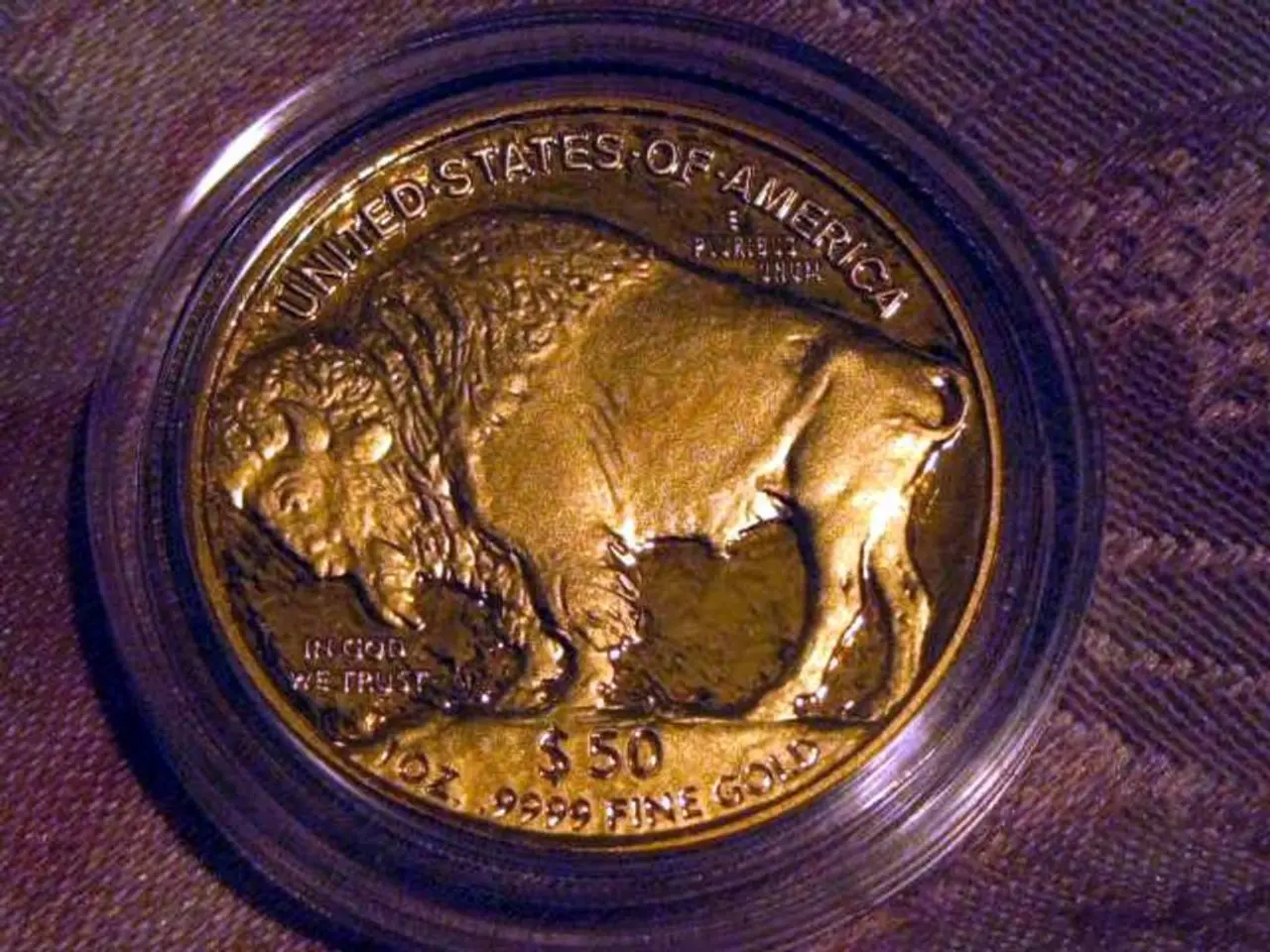Analysis on the Dollar's Instability - Overlooked by Record Equity Investments in the U.S.
The US dollar has been experiencing a steady decline in recent months, and international investors are playing a significant role in this trend.
Initially, Donald Trump's trade agenda raised concerns that foreign investors might pull back from US markets and the greenback. However, contrary to these fears, foreign investors are actively participating in the US financial markets, albeit in an unusual way.
Large investment firms like Blackrock and Vanguard have been notably active, particularly in sectors related to the pandemic. Yet, these investors are reducing their exposure to US-dollar investments in a strategic manner, hedging their currency risks.
For every dollar-hedged asset bought, an equivalent amount of currency is sold to eliminate the currency risk. This hedging effort, as explained by George Saravelos, head of FX research at Deutsche Bank, is the primary reason behind the dollar's weakness despite the strong influx of investor funds into the US.
Saravelos expects the cost of hedging currency risks on the dollar to become even cheaper for investors. This is evident in the fact that over 80% of ETF inflows into US equities are into currency-hedged investments. Similarly, around 50% of ETF inflows into the American bond market are into currency-hedged investments.
This trend is driven by the expectation of lower Fed interest rates and the growing desire to mitigate currency risks. In fact, since the beginning of the year, the Bloomberg Dollar Spot Index has fallen by more than 10%, and it is currently near its yearly low.
Interestingly, for the first time this decade, more capital is flowing into currency-hedged ETFs that buy US assets than into listed funds that are not hedged. This shift is a testament to the increasing cautiousness of foreign investors who want to invest in the US market but are wary of the dollar's volatility.
Saravelos' team analysed data from over 500 funds and found that foreign holdings of US equities and bonds had been declining from February to April. However, these holdings reached a record high in June, according to the US Treasury Department. This suggests that while foreign investors are buying more US assets like stocks and bonds, they don't want to take on the dollar risk.
"The dollar is falling because the unhedged inflows are very weak," wrote Saravelos. Markets expect further rate cuts into next year, given initial signs of weakness in the US labor market. Traders anticipate that the US Federal Reserve will begin an easing cycle on Wednesday, which could further weaken the dollar.
In conclusion, the weakening dollar is a result of foreign investors hedging their bets on the US markets. Despite the strong influx of investor funds into US stocks and bonds, the dollar's weakness is primarily due to the preference for currency-hedged investments among foreign investors.
Read also:
- Goodyear in 2025: Advancement in Total Mobility through the Launch of Kmax Gen-3 by Goodyear
- Electric SUV Showdown: Vinfast VF6 or MG Windsor EV - Your Choice Revealed
- United States Secures $632 Million to Fuel Electric Vehicle Revolution
- IM Motors reveals extended-range powertrain akin to installing an internal combustion engine in a Tesla Model Y







